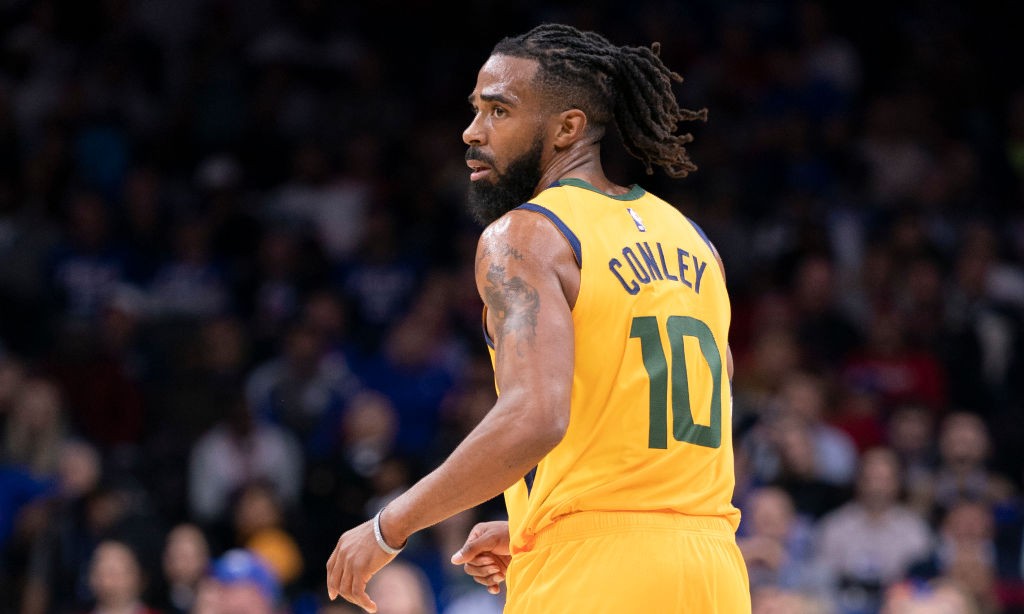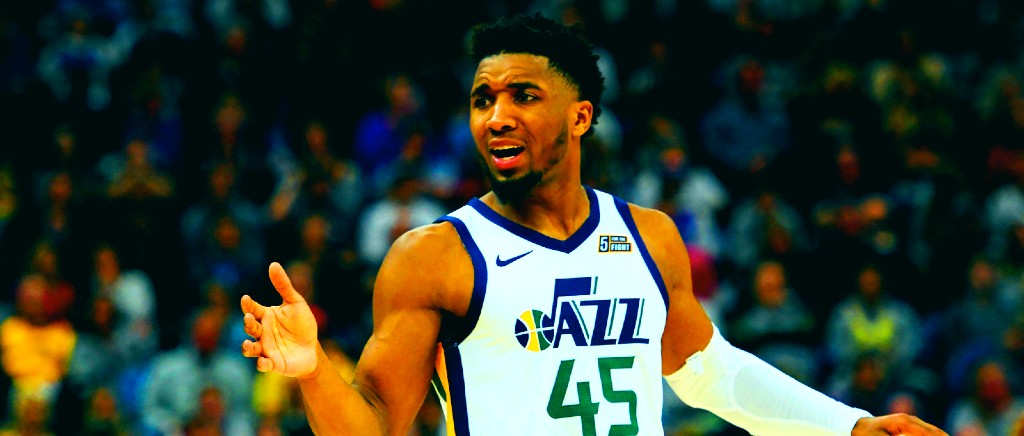There was a whole lot of buzz around the Utah Jazz this offseason after the front office made a few major moves that, on paper, seemed to upgrade their roster and set them up to be a legit contender this season. I, personally, picked them to win the West, which does not feel great 24 games into the season.
Utah traded for Mike Conley as a replacement for Ricky Rubio and signed Bojan Bogdanovic and Ed Davis to take the spots of Jae Crowder and Derrick Favors. All three of those moves sounded excellent, and there was excitement entering the season about what Utah would look like offensively with some creative help for Donovan Mitchell, meaning the young guard was theoretically freed up to do other things offensively. However, the games aren’t played on paper, and to this point in the season, the Jazz are a disappointing 13-11, placing them sixth in the West and with more questions than answers as they move forward.
The defense has taken the small step back that was expected this summer, going from first a year ago in DRtg to 11th currently (only 1.4 points per 100 possessions worse), but the idea was the offensive improvement would serve as a counterbalance to that. Instead, the offense has also regressed, dropping from a 111.4 ORtg last year to a 106.5 ORtg this season, per Cleaning The Glass. Why the Jazz have taken that step back despite the additions of better offensive players is the result of many factors, but even more confusing is figuring out the answer to how they can fix it moving forward.

Part of the problem is that Conley has been dismal to start the year, posting career-worst shooting numbers with a 44.3 effective field goal percentage that places him in the 10th percentile of all point guards. The concern with Conley is that even as he regresses to the mean with regards to shooting efficiency, his shooting profile indicates there’s only so far for him to improve. Pre-injury Conley was among the league’s best at getting to the rim, but he’s seen his percentage of attempts dip in recent years to the point where, this season, he’s getting just 19 percent of his attempts at the rim. That’s the lowest of his career and in the seventh percentile among point guards this season, per Cleaning The Glass. He’s also far from being alone on the Jazz in struggling to get shots at the basket.
Aside from Rudy Gobert, no one on the Jazz has been able to consistently get shots at the rim. They are 20th in the league in getting shots there at 34.2 percent of their attempts this season, which is a significant departure from last year, when they ranked fourth in that regard at 39.3 percent. Part of that dip comes from Conley’s inability to get to the rim, but Mitchell has also seen a sizable drop in his effectiveness attacking the rim, which speaks to a larger dysfunction of the offense.
Watching the Jazz is an exercise in frustration. You see the pieces and know what they should be capable of, and then you see the execution and it leaves you scratching your head.
The hope that Mitchell would be able to lighten his workload and up his efficiency, a la what Devin Booker is doing in Phoenix, has not come to fruition. He’s still got a 32 percent usage rate and he’s still posting middling efficiency numbers across the board, falling into old isolation habits far too often when operating as the lead guard.
Against the Thunder on Monday night, a game Conley missed with hamstring tightness, there were numerous possessions in which Mitchell was the only player to touch the ball. The idea that Utah, with more playmakers, could be a more open, flowing offense hasn’t proven to be the case. They’re 27th in the NBA in assists per game at 21.3 and 29th in potential assists per game at 38.6, per NBA Stats, which is to simply say they don’t move the ball well enough to take advantage of their new threats.
The main positive for the Jazz right now is that they’re shooting incredibly well as a team from three-point range — 38.9 percent is second in the NBA, even with Joe Ingles hitting just 33 percent of his attempts from deep. That offers a shimmer of hope that as the season wears on, they can figure out their issues, shooting will improve, and they’ll see their offensive profile rise to what most thought it could be. There don’t appear to be, however, any real quick fixes to their issues beyond some major changes coming to their playing style.
Gobert is both part of the answer and the problem for the Jazz’s woes in getting shots at the rim. Gobert has made it clear he wants more touches and to be more involved offensively, and his efficiency merits that to an extent. However, he is limited in the variance to his offensive game and his sheer determination to dive to the rim on pick-and-rolls is part of why the Jazz are near the top of the league in short mid-range attempts (between 4-14 feet) and have fewer rim looks. After setting a screen, Gobert almost always charges to the rim seeking a lob or pocket pass which isn’t always available. In those instances, his presence drags defenders to the rim to prevent the ball-handler, usually Mitchell or Conley, from being able to get all the way to the rim and sometimes leads to the absurd number of floaters both Mitchell and Conley have tried this year.
Least efficient paint scorers this season:
1. Mike Conley ………… 37.5 FG%
2. Darius Garland ……. 39.6
3. Coby White ………… 40.8
4. Devonte' Graham … 41.7
5. Dillon Brooks ………. 42.1(Min. 100 attempts) pic.twitter.com/hvuTdlkvmy
— Kirk Goldsberry (@kirkgoldsberry) December 10, 2019
Aside from cleaning up the pick-and-roll game, Utah has to figure out how to get the ball moving better in the halfcourt, because they simply aren’t getting out in transition. The Jazz are 29th in the NBA in transition frequency at 13 percent and have the highest percentage of their offense running in the halfcourt (83.5 percent), per Cleaning The Glass. What this means is, easy buckets aren’t coming their way and defenses are typically fully set by the time they’re trying to score. The only way to make life easier is to have better, more pointed ball movement to take advantage of their weapons, which will require Mitchell in particular to be a better and more willing passer.
All of this is feasible, but how layered the issues are indicates how much work there is to be done in Utah for the players and coaching staff. Figuring out the chemistry is the biggest issue, as that would likely bring along with it better ball movement, but even things like the Mitchell-Gobert pick-and-roll — something that shouldn’t have changed — seems out of sync and different this season. Hopefully Conley can return to form after he gets over this hamstring issue, and the early returns of lineups with Mitchell and Conley together on the floor have been positive even with the latter’s struggles.
There is no magical fix for the Jazz, simply hoping that time and continuity bring out the full potential and trust of this group. Until then, it’s going be hard to watch, and those that bought up Jazz stock this summer will continue to feel uneasy.







